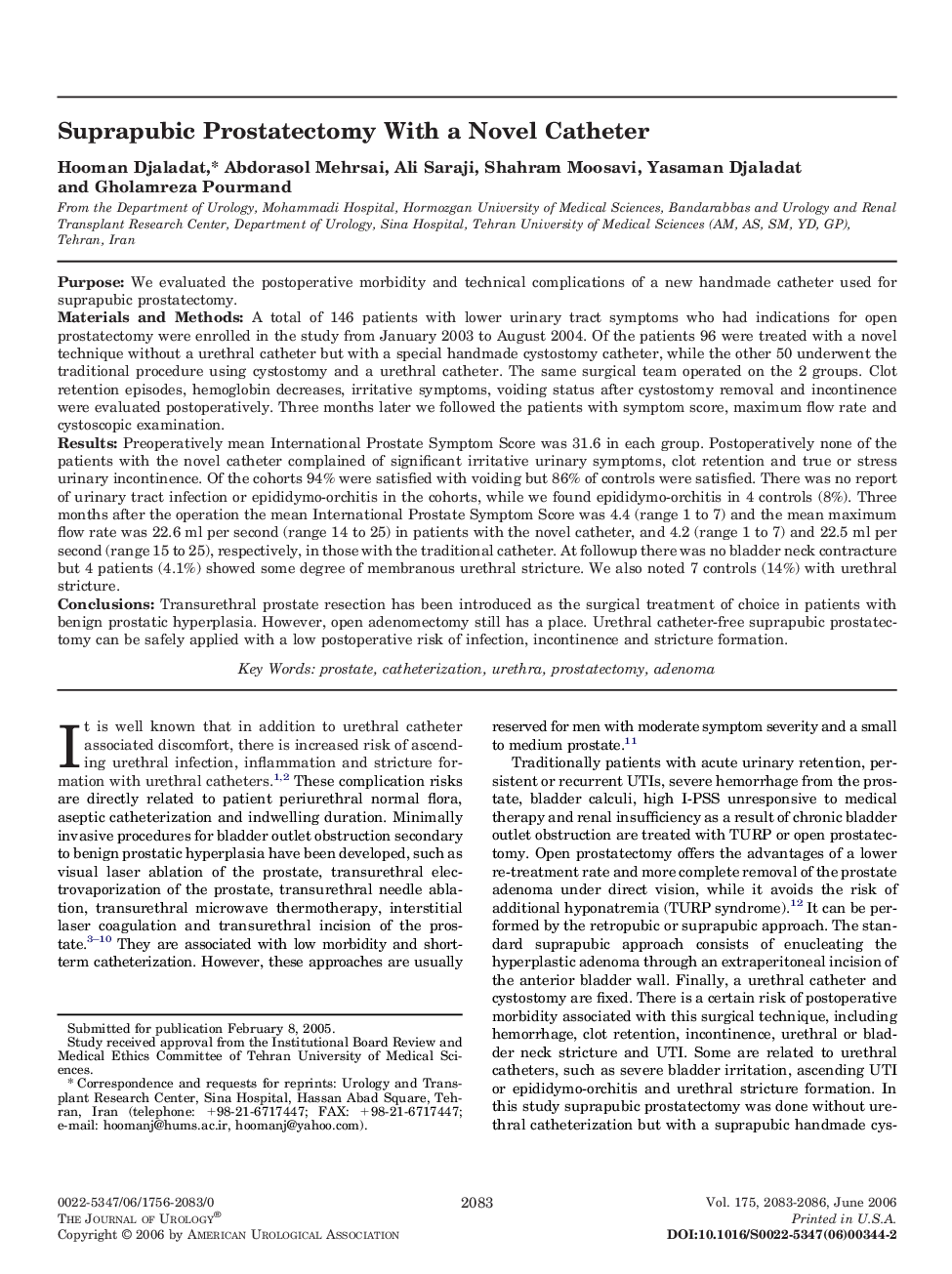| Article ID | Journal | Published Year | Pages | File Type |
|---|---|---|---|---|
| 3876360 | The Journal of Urology | 2006 | 4 Pages |
PurposeWe evaluated the postoperative morbidity and technical complications of a new handmade catheter used for suprapubic prostatectomy.Materials and MethodsA total of 146 patients with lower urinary tract symptoms who had indications for open prostatectomy were enrolled in the study from January 2003 to August 2004. Of the patients 96 were treated with a novel technique without a urethral catheter but with a special handmade cystostomy catheter, while the other 50 underwent the traditional procedure using cystostomy and a urethral catheter. The same surgical team operated on the 2 groups. Clot retention episodes, hemoglobin decreases, irritative symptoms, voiding status after cystostomy removal and incontinence were evaluated postoperatively. Three months later we followed the patients with symptom score, maximum flow rate and cystoscopic examination.ResultsPreoperatively mean International Prostate Symptom Score was 31.6 in each group. Postoperatively none of the patients with the novel catheter complained of significant irritative urinary symptoms, clot retention and true or stress urinary incontinence. Of the cohorts 94% were satisfied with voiding but 86% of controls were satisfied. There was no report of urinary tract infection or epididymo-orchitis in the cohorts, while we found epididymo-orchitis in 4 controls (8%). Three months after the operation the mean International Prostate Symptom Score was 4.4 (range 1 to 7) and the mean maximum flow rate was 22.6 ml per second (range 14 to 25) in patients with the novel catheter, and 4.2 (range 1 to 7) and 22.5 ml per second (range 15 to 25), respectively, in those with the traditional catheter. At followup there was no bladder neck contracture but 4 patients (4.1%) showed some degree of membranous urethral stricture. We also noted 7 controls (14%) with urethral stricture.ConclusionsTransurethral prostate resection has been introduced as the surgical treatment of choice in patients with benign prostatic hyperplasia. However, open adenomectomy still has a place. Urethral catheter-free suprapubic prostatectomy can be safely applied with a low postoperative risk of infection, incontinence and stricture formation.
